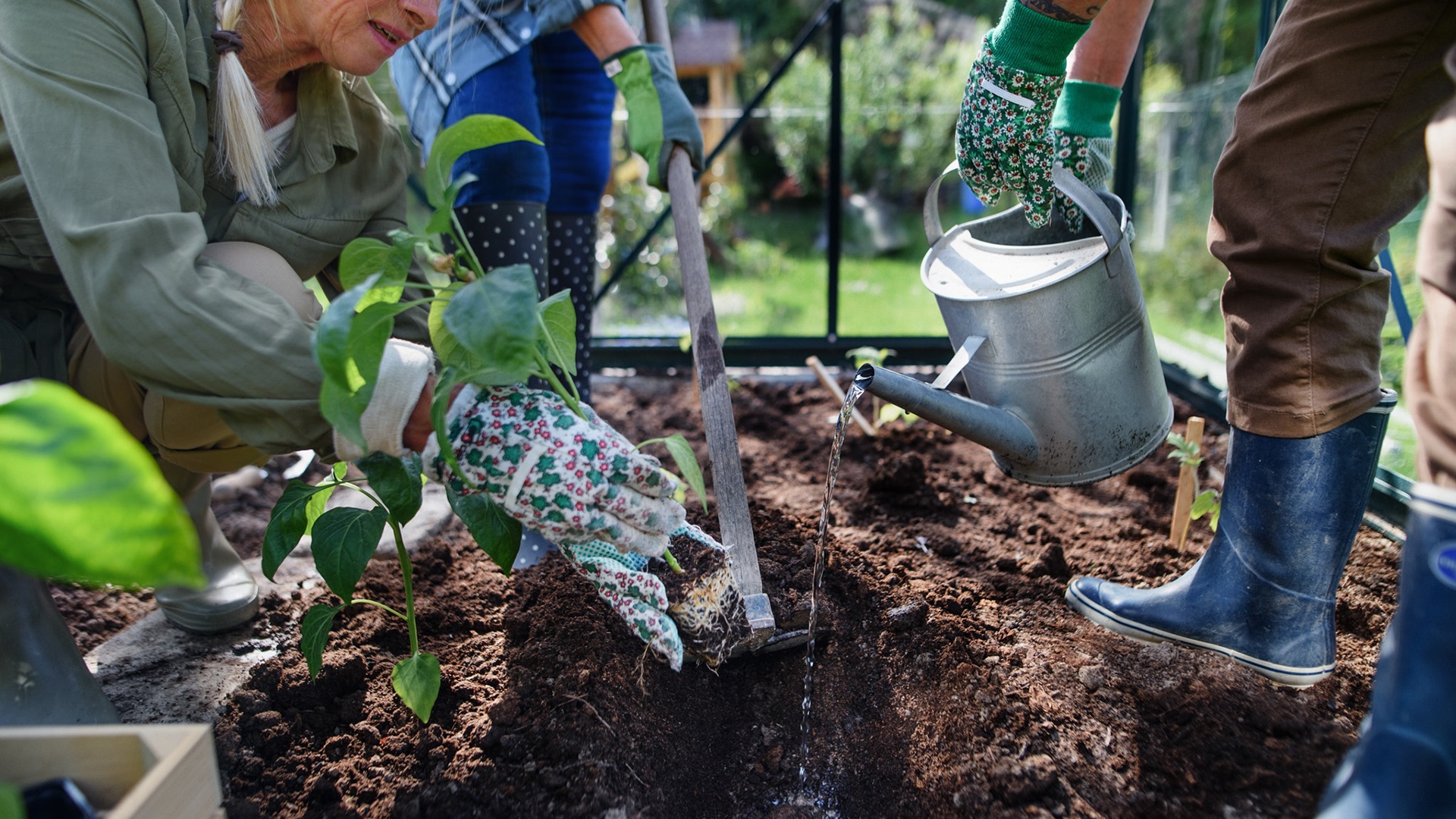5 Sustainable Swaps Worth Saving For
Set a savings goal that will help you make a positive difference in the world around you.
Share:

Often, it can seem like you must make a choice between doing something good for the environment or your wallet. But there are many ways to make a positive choice for both you and the planet.
Keep reading to learn about ways that can help you reduce, reuse, and recycle your way to a greener world and stronger financial situation.
Smart Thermostat
Purchasing a smart thermostat is one of the easiest ways to get started with reducing energy consumption and contributing to a healthier planet.
How it’s better for the planet:
A smart thermostat learns the rhythms and schedules of your home and adapts to real-time conditions, minimizing wasteful heating and cooling, maintaining a more consistent temperature, and significantly reducing energy consumption.
How it helps you save money over time:
Smart thermostats that meet Energy Star criteria save users an average of 8% on their utility bills, or about $50 per year, according to the EPA. However, some households save up to $200 per year. The savings are likely to be greater if you live in an area with frigid winters, brutal summers, or high energy prices.
Your savings goal:
It’s a good idea to research the different models and features to decide which model will work for you. While you can get a basic smart thermostat for as low as $100, there are some that can go for as much as $2,000, depending on the number of features you’d like, such as carbon emissions tracking.
Low Flow Showerhead
How it’s better for the planet:
Showers represent almost 17% of annual water usage in most households—up to 40 gallons per day, according to the U.S. Environmental Protection Agency (EPA). A low-flow showerhead can save about 2,700 gallons of water annually, the EPA says.
How it helps you save money over time:
Not only do low-flow showerheads help save water, they also save you money on energy bills. By reducing demands on water heaters, the average family can save more than 330 kilowatt hours of electricity each year, the EPA reports. That’s enough to power your entire house for 11 days.
Your savings goal:
While most low flow showerheads are relatively affordable to purchase with most ranging from $10 to $100, you should research what additional costs may need to be factored in as part of the installation process or if you’d be willing to do it yourself instead.
Composting Equipment
Composting is the natural way to recycle, according to the U.S. Environmental Protection Agency. Rather than sending food scraps and yard trim to the landfill, swap to a compost bin and reuse the waste to benefit your environment. Even if you don’t have a green thumb or a backyard, you can sell or donate your compost to a school or community garden. You can start composting with a do-it-yourself bin, but you may be more successful if you use specially designed, aerated equipment to produce the best compost. If you’re not ready to take it all on yourself, you can also search for local services that can turn your organic waste into compost.
How it’s better for the planet:
When you compost, you reduce the trash sent to landfills and recycle household waste into a valuable commodity. By turning food scraps and yard clippings into compost, you can transform your household waste into a healthy natural fertilizer for your lawn, garden, or community.
How it helps you save money over time:
With compost on hand, you may never have to spend money again on fertilizer or weed killer. Instead, spread handfuls of finished compost around trees, lawn, flowerbeds, or garden, and let it work its natural magic! If you typically water your lawn or garden, composting can also help you conserve water and save money on your water bill by increasing the moisture in your soil.
Your savings goal:
Composting is a relatively inexpensive endeavor that makes a big difference for the waste stream and the environment. You’ll only have to save $100 to $400 to purchase an aerated compost bin and start composting.
Heat Pump
Rather than heating your home with a gas furnace, consider switching to an electric heat pump, which can provide both heating and cooling, while helping you reduce carbon emissions and energy usage.
How it’s better for the planet:
Heating and cooling represent 60% of home emissions, and a heat pump can reduce heating-related fossil fuel use by 40% or more. Rather than generating heat by burning fossil fuels, heat pumps transfer heat, making them two to three times more energy efficient than most fossil fuel heating and cooling systems.
How it helps you save money over time:
Because a heat pump is so much more efficient than a fossil fuel heating and cooling system, this will most likely allow you to save money on energy bills. The Department of Energy reports an average savings of $500 per year, but in many parts of the country, the savings are closer to $1,000 annually.
Your savings goal:
The exact price to purchase a heat pump and have it installed will depend on your home’s size and existing ductwork. If you want to save up for this type of home improvement, make this a savings goal. The total cost ranges from $1,500 to $20,000, with an average cost of $10,750.
Solar Panels
By powering your home with renewable solar energy, you can reduce dependence on fossil fuels and avoid releasing harmful greenhouse gases into the atmosphere.
How they’re better for the planet:
About 60% of the energy generated by U.S. power plants comes from fossil fuels like coal and natural gas. Not only are fossil fuels a limited resource, but burning them has been directly tied to climate change. Using solar panels to power your home with solar energy instead of fossil fuels reduces greenhouse gas emissions and air pollution, as the sun is a clean, renewable source of energy.
How they help you save money over time:
Your savings goal:
If you want to make this your savings goal, the cost of installing solar panels to power your home will depend on the size of your home and your local market. For a 2,000-square-foot home, solar panels will typically cost between $14,000 and $26,000.
Thankfully, there are many options when it comes to making sustainable improvements that also help your wallet. And by opening a Forbright Bank Growth Savings account, you’re able to maximize your savings with a competitive rate and no fees, all while supporting a brighter future.
Disclaimer: This article is for information and education only. It should not be considered financial or tax advice.





